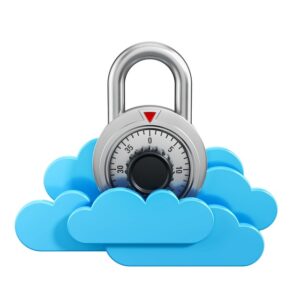Having a secure website is crucial for small businesses. However, with cyber threats becoming more sophisticated, it’s essential to protect your website and your customers’ information from potential attacks. In this article, we’ll be discussing some essential tips and practices to help you build a secure website for your small business. By implementing these strategies, you can enhance the security of your online presence and instill confidence in your customers.
1. Choose a Reliable Web Hosting Provider:

Selecting a reputable web hosting provider is the foundation of a secure website. Look for a provider that offers robust security measures such as SSL certificates, firewalls, regular backups, and malware scanning. Ensure they have a strong track record of reliability and prompt support in case of any security concerns or technical issues.
2. Implement Strong User Authentication:
One of the primary ways to protect your website is by implementing strong user authentication. Encourage your users to create unique, complex passwords and consider implementing two-factor authentication (2FA). 2FA adds an extra layer of security by requiring users to provide a second form of verification, such as a code sent to their mobile device, in addition to their password.
3. Keep Software and Plugins Up to Date:
Outdated software and plugins are common entry points for cyber attackers. Regularly update your content management system (CMS), themes, and plugins to ensure you have the latest security patches. Enable automatic updates whenever possible to stay protected against known vulnerabilities.
4. Use Secure Sockets Layer (SSL) Encryption:
SSL encryption is crucial for securing data transmission between your website and your users’ browsers. It protects sensitive information such as login credentials, credit card details, and personal data. Obtain an SSL certificate for your website, indicated by the “https://” prefix and the padlock symbol in the browser address bar, giving users confidence that their information is encrypted and secure.
5. Employ Website Backup and Recovery Solutions:

In the event of a security breach or data loss, having a reliable backup and recovery solution is vital. Regularly back up your website’s files and databases to a secure, offsite location. Test the backup restoration process periodically to ensure its integrity and effectiveness.
6. Use a Web Application Firewall (WAF):
A Web Application Firewall (WAF) acts as a shield between your website and potential attackers, filtering out malicious traffic and preventing unauthorized access. It monitors and blocks suspicious activities, such as SQL injections and cross-site scripting (XSS) attacks, safeguarding your website and its visitors.
7. Secure Data Collection and Storage:
If your website collects sensitive information from customers, such as credit card details or personal data, it’s crucial to handle it securely. Follow industry best practices for data collection and storage, including encryption and compliance with data protection regulations like the General Data Protection Regulation (GDPR) or California Consumer Privacy Act (CCPA).
8. Educate Your Staff:

Human error is a significant factor in security breaches. Educate your staff about the importance of cybersecurity, including best practices for password management, recognizing phishing attempts, and maintaining overall website security. Conduct regular training sessions and provide resources to keep your team informed and vigilant.
9. Regularly Monitor and Audit Your Website:
Maintain a proactive approach to website security by regularly monitoring and auditing your website. Monitor server logs, review user access logs, and employ security scanning tools to identify potential vulnerabilities or signs of a breach. Promptly address any security issues to mitigate risks effectively.
10. Plan for Incident Response:
Even with robust security measures in place, it’s crucial to have an incident response plan. Define clear steps to follow in the event of a security incident, including communication protocols, backup restoration procedures, and coordination with any necessary third-party experts or authorities.
By following these essential tips and practices, you can build a secure website for your small business, protecting both your business and your customers. Prioritize website security, stay informed about emerging threats, and regularly update your security measures to adapt to evolving risks.

